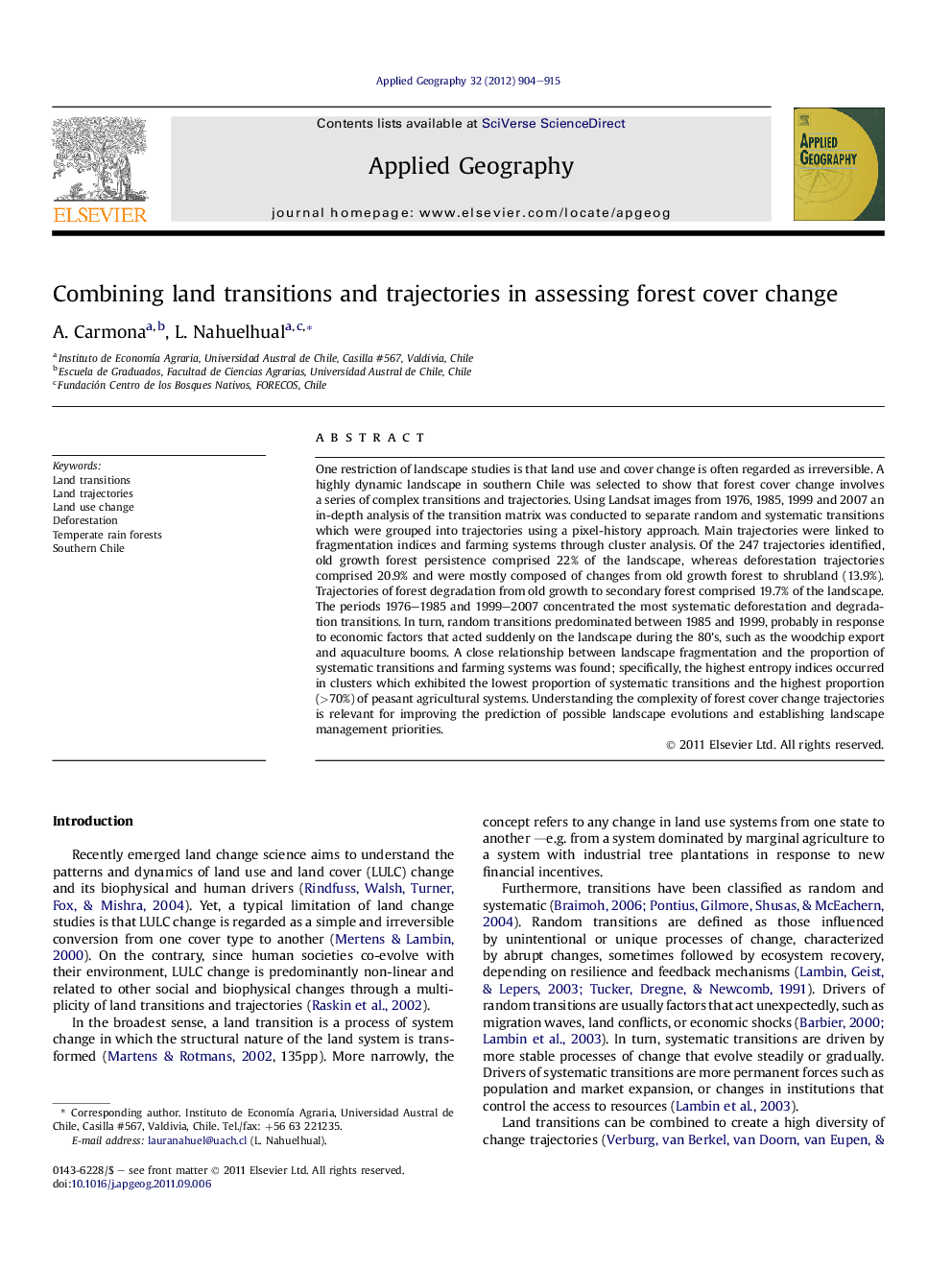| کد مقاله | کد نشریه | سال انتشار | مقاله انگلیسی | نسخه تمام متن |
|---|---|---|---|---|
| 83612 | 158727 | 2012 | 12 صفحه PDF | دانلود رایگان |

One restriction of landscape studies is that land use and cover change is often regarded as irreversible. A highly dynamic landscape in southern Chile was selected to show that forest cover change involves a series of complex transitions and trajectories. Using Landsat images from 1976, 1985, 1999 and 2007 an in-depth analysis of the transition matrix was conducted to separate random and systematic transitions which were grouped into trajectories using a pixel-history approach. Main trajectories were linked to fragmentation indices and farming systems through cluster analysis. Of the 247 trajectories identified, old growth forest persistence comprised 22% of the landscape, whereas deforestation trajectories comprised 20.9% and were mostly composed of changes from old growth forest to shrubland (13.9%). Trajectories of forest degradation from old growth to secondary forest comprised 19.7% of the landscape. The periods 1976–1985 and 1999–2007 concentrated the most systematic deforestation and degradation transitions. In turn, random transitions predominated between 1985 and 1999, probably in response to economic factors that acted suddenly on the landscape during the 80’s, such as the woodchip export and aquaculture booms. A close relationship between landscape fragmentation and the proportion of systematic transitions and farming systems was found; specifically, the highest entropy indices occurred in clusters which exhibited the lowest proportion of systematic transitions and the highest proportion (>70%) of peasant agricultural systems. Understanding the complexity of forest cover change trajectories is relevant for improving the prediction of possible landscape evolutions and establishing landscape management priorities.
► We assessed the composition of trajectories involved in native forest change.
► A total of 247 trajectories were identified between 1976 and 2007.
► Forest persistence was predominant (22%) and concentrated in protected areas.
► Deforestation and forest degradation trajectories concentrated in subsistence farms.
► We conclude that forest dynamics characterizes by complex non-linear trajectories.
Journal: Applied Geography - Volume 32, Issue 2, March 2012, Pages 904–915